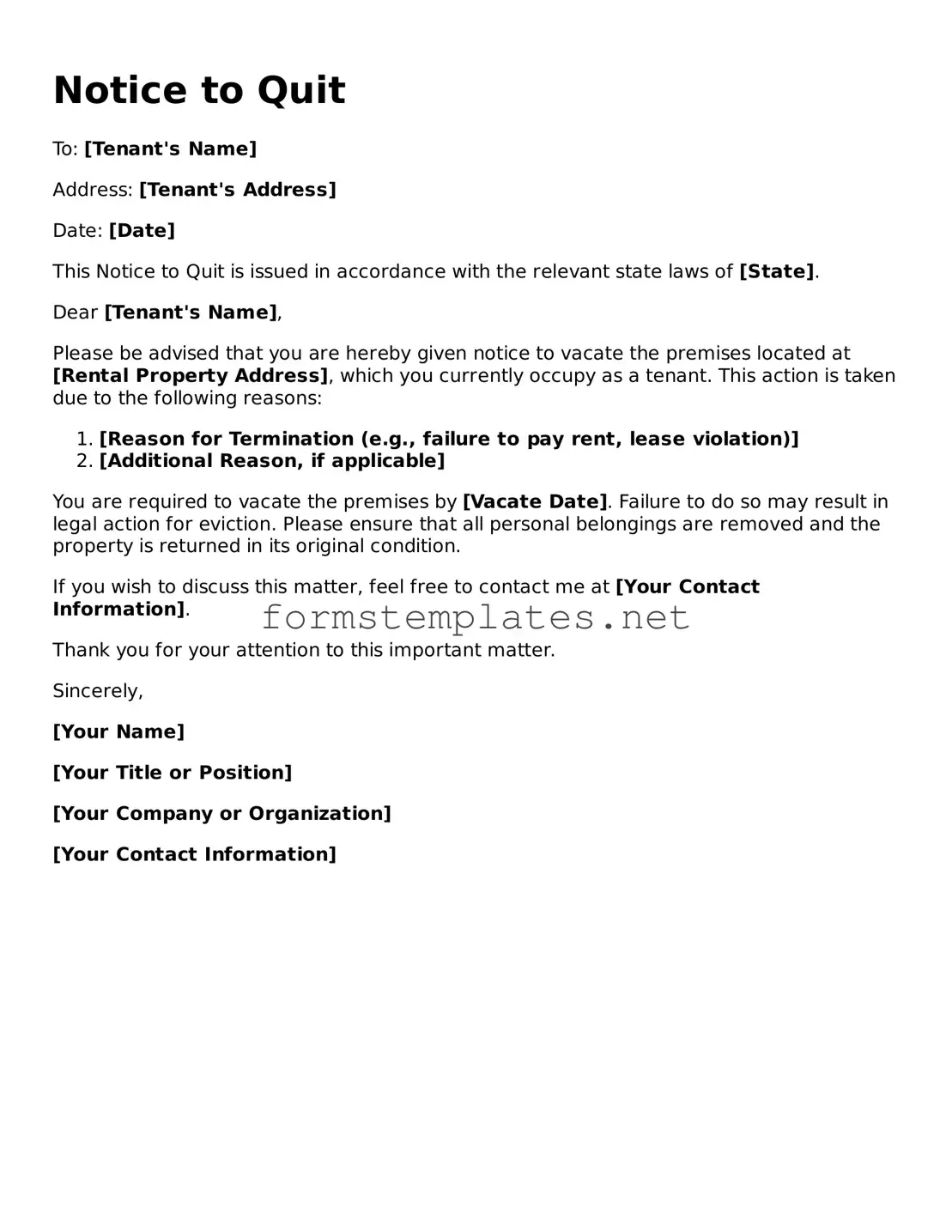Attorney-Verified Notice to Quit Form
The Notice to Quit form is a legal document used by landlords to inform tenants that they must vacate the rental property. This notice serves as a formal request, typically indicating the reason for eviction and providing a timeline for the tenant to leave. Understanding this form is crucial for both landlords and tenants to ensure their rights are protected during the eviction process.
Open Editor Now
